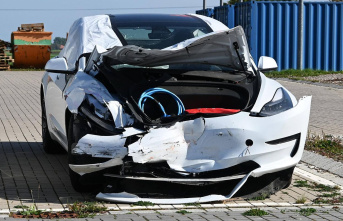The German economy continues to move sideways. This is the result of the early summer economic survey conducted by the German Chamber of Industry and Commerce (DIHK) among 21,000 companies from all sectors and regions. "There are still no signs of a broad upswing," said Ilja Nothnagel, member of the DIHK executive board, at the presentation of the figures in Berlin. Although the German economy is resilient overall, there is no real push forward, for example to catch up with the corona pandemic. The DIHK therefore continues to assume zero growth for 2023.
The long-term structural challenges are now reflected more than ever in the current figures, and the increasing burden of the interest rate swing is showing its first effects:
Compared to the mood at the beginning of the year, the financial situation of companies has hardly improved. Almost 40 percent of the companies consider their financial situation to be problematic. Smaller companies are in a much worse position here (43 percent) than large companies with 1000 or more employees (22 percent). While the increased energy costs were the big problem in the past few months, the difficulties with financing are now increasing. Significantly more companies than in 2022 are having problems raising outside capital: 33 percent compared to 22 percent in the previous year.
21 percent now see the level of interest as problematic; in 2022 it was still six percent. In the real estate industry, in transport and in motor vehicle construction, the burdens have risen the most as a result, up to 40 percent. But all sectors of the economy and company sizes have mentioned this risk.
The high interest rates also mean that companies that are severely affected are reducing or suspending their investments. Over a third reported it. For all other companies it is almost a quarter.
Overall, the DIHK sees the investment climate as mixed. Almost half of the companies do not plan to change their investment volume in the next twelve months, and a quarter intend to invest less. Compared to the beginning of the year, the situation has hardly improved and the long-term average value for investment intentions is only slowly being reached again. Above all, investments in product innovations and capacity expansion are declining. According to the DIHK, when investments are made, the focus is on implementing legal requirements for environmental protection or energy savings. This is worrying because the pre-crisis level has not yet been reached three years after the outbreak of the corona pandemic. In order to close the investment gap quickly, above-average investment intentions would be necessary.
Companies with positive business expectations are planning more investments at the moment. This applies, for example, to capital goods manufacturers such as machine builders, but most of all to the energy industry, whose already high investment intentions are increasing in view of the federal government's expansion targets.
Apart from the rise in interest rates, companies find the bureaucracy particularly burdensome. More than 40 percent view the general economic environment as a business risk, up slightly from the previous survey. With around 4000 free text answers, bureaucracy was mentioned most frequently, as well as energy, inflation and taxes. Nothnagel therefore called for the German location to be strengthened: "We urgently need new impetus for private investment, but also for infrastructure expansion." Planning processes would also have to be accelerated. "The biggest problem that the companies in our survey could freely state is bureaucracy," says Nothnagel. "These are all framework conditions that we have in our own hands. Politicians have to act here."
Of all the risk factors, energy and commodity prices remain the most cited. Even if prices have recently fallen and the situation for companies has improved as a result, many consider the supply situation to be uncertain next winter.
Meanwhile, two other risk factors are setting new highs: the skills shortage and labor costs, which are the second and third biggest business risks in almost every industry. Across all sectors of the economy, the development of labor costs is a concern for more than every second company. This is justified with the rising core inflation rate, concerns about a wage-price spiral and the ongoing shortage of skilled workers. In the service sector, where companies lost a lot of staff during the corona pandemic, the shortage of skilled workers is now even the biggest problem. In industry, skill shortages and labor costs both hit all-time highs at 63 percent and 56 percent, respectively.
As far as business expectations for the next twelve months are concerned, the situation has improved somewhat compared to the beginning of the year. But just under a quarter of companies still expect their business to deteriorate over the next 12 months, particularly in retail and construction. Over a third of construction companies fear a recession due to rising interest rates and a drop in new orders. The trade expects a reluctance to buy because of the still high inflation rate and is under pressure because of the high purchase prices. Two thirds of the companies in this sector are pessimistic about the coming year.
According to the DIHK, 18 percent expect better business, and the service sector in particular is more optimistic than before. Industrial companies are also expecting a slight improvement because material bottlenecks are decreasing and the order books are full here. Overall, business expectations are roughly at the previous year's level, having bottomed out in autumn 2022. For now, however, they remain in negative territory because more companies are pessimistic than optimistic.
This article first appeared on Capital.de.








